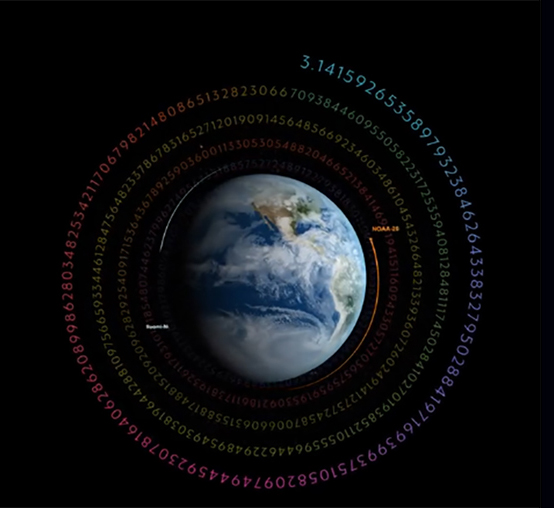The ratio of a circle’s circumference to its diameter is a constant value. The size of the circle does not matter; this ratio is always the same value and is called pi.
The existence of this constant was known by the Babylonians and the Egyptians dating back to at least 2000 B.C. The numerical value is represented by the Greek letter for p, or π.
The first three digits of pi are 3.14, so today — March 14 — is often celebrated as pi day with pie. The value of π turns out to be an irrational number: Its decimal form neither ends nor becomes repetitive. The exact value is unknowable. About a decade ago, a researcher calculated the value to 2.7 trillion digits.
You might have first encountered pi in early classes on geometry or trigonometry. You learned that pi, along with the radius, is used to calculate the circumference of a circle, the area of a circle or the volume of a sphere. Since cloud droplets are near spherical, pi is used to calculation how much water is in a cloud knowing the number and size of the drops.
Because of pi’s relationship to the circle and to spherical coordinate systems, it appears in many formulas in many areas of mathematics and physics. Meteorology is a physical science, steeped in math, so we inevitably encounter pi.
Pi appears in the field of electromagnetics, which is used to describe how light travels through the atmosphere. It is used in equations that describe why the sky is blue.
Pi appears in equations describing processes that are periodic, and therefore is intimately associated with waves. Atmospheric patterns and the movement of the winds can be described as waves. So, pi appears in mathematical equations that describe the movement of weather systems. The waviness pattern of the jet stream can be described by its “meandering ratio,” which includes the value of pi.
A world without pi, and pie, would be very different.
Steve Ackerman and Jonathan Martin, professors in the UW-Madison department of atmospheric and oceanic sciences, are guests on WHA radio (970 AM) at 11:45 a.m. the last Monday of each month. Send them your questions at stevea@ssec.wisc.edu or jemarti1@wisc.edu.


